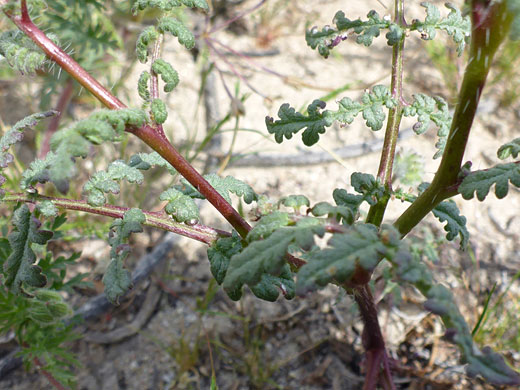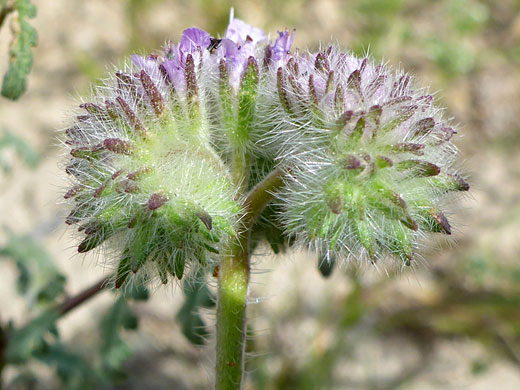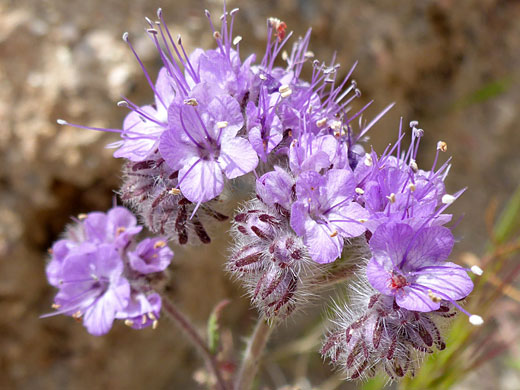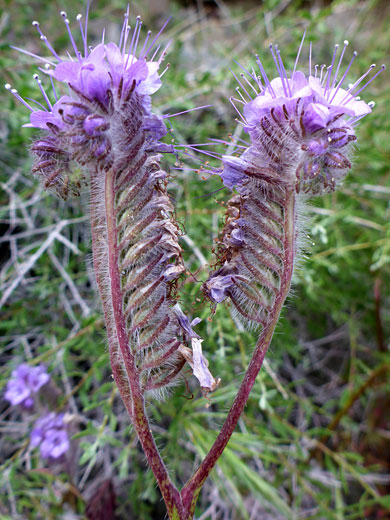Phacelia Tanacetifolia, Lacy Scorpionweed
Plants > Wildflowers > Boraginaceae > Phacelia Tanacetifolia

Hairy, purplish sepals; phacelia tanacetifolia, Hagen Canyon, Red Rock Canyon State Park, California
Common names:
Lacy scorpionweed, purple tansy
Family:
Scientific name:
Phacelia tanacetifolia
Main flower color:
Range:
California, west Nevada, and small areas of some other states
Height:
Up to 3 feet
Habitat:
Open, sandy or gravelly locations, from near sea level to 5,000 feet
Leaves:
Narrowly oblong, lined by irregular lobes, themselves sometimes lobed of toothed; up to 8 inches long
Season:
March to May
The relatively long but narrow leaves of phacelia tanacetifolia are divided most of the way to the midvein into rounded lobes, often lined by shallow teeth. The green or reddish stems are quite tall, branch a few times, and have a covering of long, stiff, spreading hairs; sparse lower down, becoming thicker towards the top. Stems are minutely glandular.
Flowers are produced in a dense cluster at the top of the stems, usually containing between two and four branches, which are tightly coiled at first, straightening as the flowers mature. The linear calyx lobes are densely hairy, initially colored green, maturing to red-purple. The corolla is only slightly longer than the calyx (around a quarter of an inch); it opens widely to five rounded, purple or bluish lobes. The strongly exserted stamens have purple, hairless filaments and yellow anthers.
Flowers are produced in a dense cluster at the top of the stems, usually containing between two and four branches, which are tightly coiled at first, straightening as the flowers mature. The linear calyx lobes are densely hairy, initially colored green, maturing to red-purple. The corolla is only slightly longer than the calyx (around a quarter of an inch); it opens widely to five rounded, purple or bluish lobes. The strongly exserted stamens have purple, hairless filaments and yellow anthers.
All Contents © Copyright The American Southwest | Comments and Questions | Contribute | Site Map




